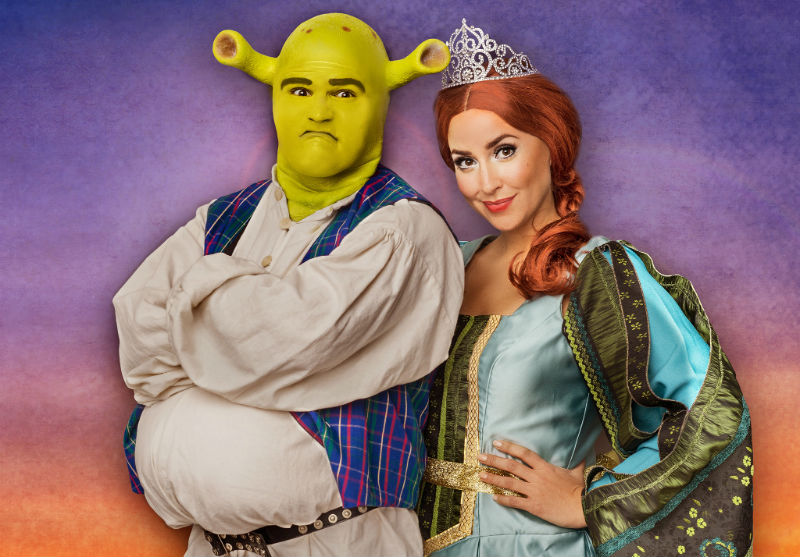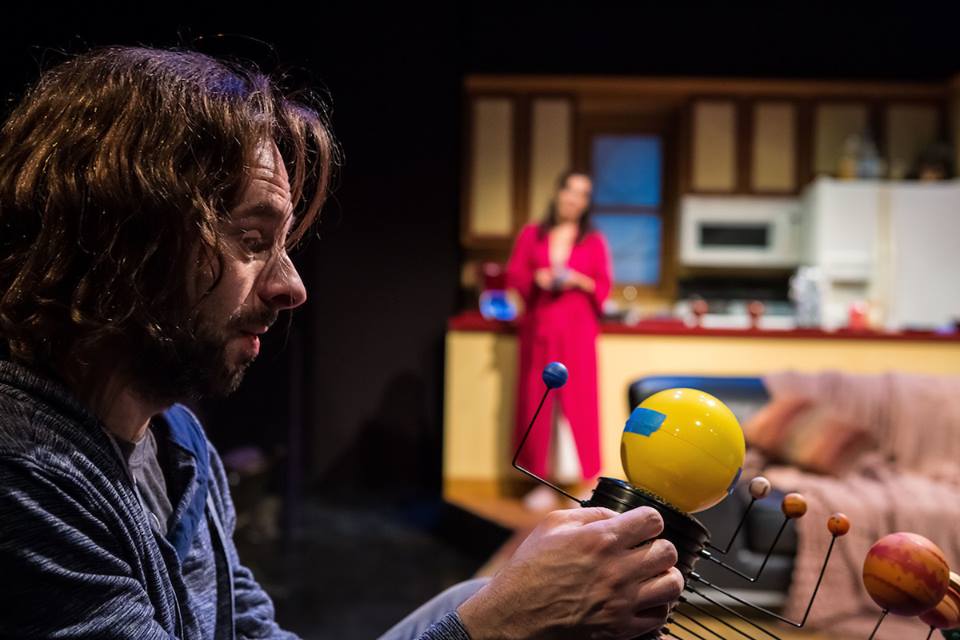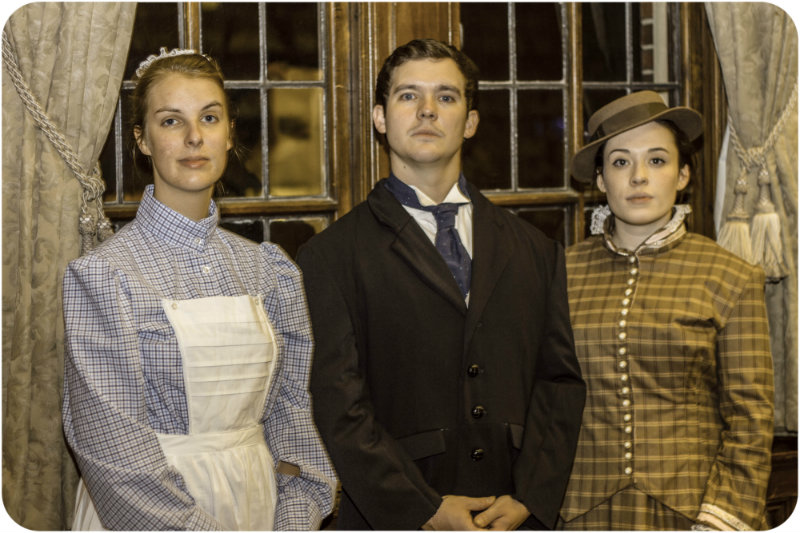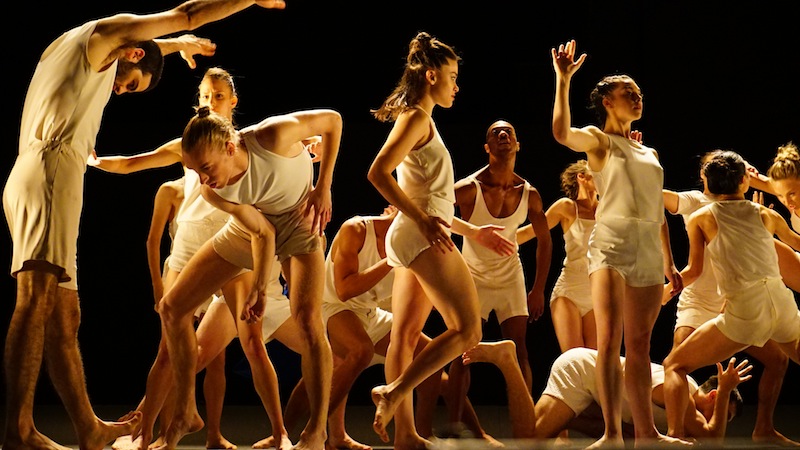Animating Theater: The Burns Park Players wrestle with "Shrek"

Directing the Burns Park Players’ annual stage musical, particularly for the first time, comes with unique challenges.
“Sometimes an actor goes, ‘I’m on call for heart surgery. I may have to leave because of that,’” said Matt Kunkel, who’s at the helm of BPP’s upcoming production of Shrek. “And it’s like, they all put in more work [in rehearsal] because they don’t know when they might have to go, so rather than giving 100 percent, they put in 125 or 200 percent. And when they’re not there, they’ll meet with someone the next day to learn everything they missed. It’s a very professional group. They’re incredibly hard workers.”
These performers aren’t professional actors, of course. They’re Burns Park students, parents, teachers, staff, and neighbors who come together, working both on stage and behind the scenes, to put on a big musical each winter. Money raised by the production goes to support arts programs in the Ann Arbor Public Schools.
Review: Purple Rose’s "Smart Love" asks big questions in family drama

What is a human being? Is a human a collection of parts, an accumulation of memories? A smile, a dance, a bundle of eccentricities?
These are a few of the questions pondered in Brian Letscher’s new comic drama Smart Love, being given its world premiere at Chelsea’s Purple Rose Theatre.
It’s a tightly focused family drama which is also a brainy sci-fi take on the limits of science and the consequences of going beyond those limits.
Double Acts: Theatre Nova's "Popcorn Falls" is full of comedic riffs

The new play Popcorn Falls is an energetic romp, full of impressions, wit, and (slightly manic) charm. Written by James Hindman and directed by Daniel C. Walker, Popcorn Falls features two men riffing off one another in the style of comedy duos like Laurel and Hardy or Abbott and Costello. The time breezes by as the actors take on fifteen different roles, bringing to life the citizens of an entire small town.
The play focuses on Ted Trundell (Jeff Priskorn), the mayor of Popcorn Falls, and his friend, Joe (Jonathan Jones). When Mr. Doyle -- also played by Jones, a grinch-like role similar to Mr. Potter from It’s a Wonderful Life but with the lilting accent of a villainous Jimmy Stewart -- tells the mayor that he plans to take over the town and turn it into a sewage treatment center unless they can successfully put on a play that the town agreed to many years earlier. Ted decides that he’ll do whatever it takes to save his home -- even writing and directing a play despite having practically no familiarity with theater whatsoever.
Good Vibrations: Civic Theatre's "In the Next Room" promises more stimulation than shock

On Monday, the cast and crew of the Ann Arbor Civic Theatre production of In the Next Room were busy with final preparations at the Arthur Miller Theatre, where the play opens Thursday.
The cast was doing a run through while director Melissa Freilich was busily taking notes and getting the perspective from every angle around the Miller’s thrust stage. The crew was making last minute adjustments to an unusual set and working with the sophisticated Miller Theatre lighting -- house lights, spotlights, lights on stage, mood lights.
On, off, on, off. Thank you, Mr. Edison.
Electricity is an important element in modern theater productions. It also plays a major role is Sarah Ruhl’s popular play. The full title is a bit “shocking” and a bit playful: In the Next Room, or, the Vibrator Play. The play is set in the 1880s, a time when the advent of widespread electrical power and modern ideas in medicine were coming together in interesting ways.
“Sarah Ruhl is one of my favorite playwrights,” said Freilich. “I think she writes some beautiful and really emotionally connected works. ... It asks us to imagine ourselves in this different situation in the 1880s when women were being treated for hysteria and yet the characters are so relatable. The situation seems so absurd to a modern audience. But I love a work that hooks us emotionally and then gets us to think.”
From Rubik's Cube to Roller Coaster: Penny Stamps Speaker Series, Winter 2017
For the last 12 years, Chrisstina Hamilton has been working out a puzzle of sorts for thousands of people to enjoy. As director of visitors' programs for the University of Michigan's STAMPS School of Art & Design, Hamilton organizes the school's popular Penny Stamps Speaker Series.
"It's sort of like this 3-D Rubik's Cube kind of thing when you're trying to put it together, and it's incredibly difficult because you lose pieces here and there," Hamilton said. "People want to line up, and you think, 'We can't have this come after that.' But somehow, miraculously, it ends up all coming together."
The free guest speaker series takes place Thursdays at Ann Arbor's Michigan Theatre (with a few exceptions) and features artists that represent a spectrum of media, backgrounds, and viewpoints.
The winter 2017 season gets underway this week and follows on a successful fall 2016 run, which included a surprisingly chatty Mark Mothersbaugh (Hamilton had been told the artist, composer, and Devo frontman could be shy in front of crowds, but not so here: "He just told story after story," she said. "We could barely get him off the stage") and the series' first foray into hosting satellite events in neighboring Ypsilanti.
Hamilton said the big challenge every season is making it "incredibly diverse" in terms of mediums people work with and perspectives they offer, as well as gender, and race.
Might As Well Jump, Jump, Jump: Igor and Moreno's "Idiot-Syncrasy"

thmpf thmpf thmpf thmpf thmpf thmpf thmpf thmpf thmpf
You know what that sound is? It’s jumping. Not just a jump, but jumping -- ongoing.
Maybe you have a muscle memory of trampolines, or a visual memory of kids’ games, or an ancestral memory of the bouncing that shows up in so many folk dances, but you know jumping. And Igor Urzelai and Moreno Solinas -- the London-based dance duo known as Igor and Moreno -- are counting on that, counting on our shared understanding of sustained thmpf thmpf thmpf for the success of their show Idiot-Syncrasy, which has its U.S. premiere at the Arthur Miller Theater this weekend, sponsored by http://ums.org/performance/idiot-syncrasy/University.
Igor and Moreno bounce throughout the show, with their jumping being a simple strategy to bring the group -- them and us, the audience -- together. We all tap into the shared pulse; we feel it together, in synchrony. The jumping, like a pulse, becomes a bass line for other, more nuanced activities Urzelai and Solinas carry out. And when that jumping keeps going and going, we understand that, too. We know about endurance and about exhaustion, so we’re right with them when what had been something playful becomes something more serious and powerful when it “spirals to a darker place.”
The streamlined nature of Idiot-Syncrasy’s central premise -- just two bodies, singing and dancing and jumping -- came originally from an economic crisis in 2013 when they made the work. There was a desire, and a financial imperative, to do “more with less,” to strip down to very simple means. “You really only need a little for something quite big to happen,” Solinas said.
Ann Arbor District Library 2016 Staff Picks: Books, Movies, Music & More

The Gregorian calendar rules most of the world, but time is a continuum. That's why our 2016 Ann Arbor District Library staff picks for books, music, film, and more include items that go back as far as 1865. Our list is comprised of media (and a few other things) that made an impact on us in 2016, no matter when the material came out.
Libraries have always acted as curation stations, helping sort through the vast amount of media released every year. On our website, we have more than 50 staff-curated lists of recommendations, but we don't just advocate for things digitally. We share our "picks" in person every time you step into the library. Books with prominent positions in our spaces, whether facing forward or on shelf tops, are chosen by staff members because they want you to pick up those pages.
Consider the massive post below featuring 55 books, 25 films and TV shows, and 20 albums -- plus a few odds and ends -- as a continuation of those curated lists, those forward-facing books, and the Ann Arbor District Library’s ongoing mission to bring high-quality art, entertainment, and information into your lives.
So, ready your library cards: Most of the recommendations below are in our collection; just click on the {[AADL]} link at the end of each pick to be taken to the item's page on our website.
Spontaneity on Cue: Batsheva Dance Company

People are going gaga for Batsheva Dance Company -- in part because of its complex and compelling system of movement called "Gaga."
Based in Tel Aviv, Batsheva is considered among the foremost contemporary dance companies on the planet, its reputation resting on both artistic director Ohad Naharin, whose innovative dances have earned him international recognition, and the dancers -- strikingly beautiful, preternaturally facile people capable of movement that can be breathtaking, quicksilver, poignant, contorted, edgy, quizzical, bombastic, and much more. They have a totally engaging hyper-presence.
The University Musical Society-sponsored Batsheva performances at the Power Center on January 7 and 8 are the North American premieres of Naharin’s 2015 provocatively titled Last Work and kicks off a six-week tour that will take the company to major cities in U.S. and Canada. The tour is also the first chance U.S. audiences will have to see Batsheva live since 2014.
Talking with Luc Jacobs, a former Batsheva dancer who now serves as Naharin’s rehearsal director, afforded me the chance to get an insider’s perspective on Batsheva, Naharin, and Last Work. Fittingly, our conversation began and ended with "Gaga," Naharin’s invented movement language that allows him to communicate more directly with the dancers.
New Year's Japes: 50 First Jokes at The Ark

Organizing 50 people to be part of a show is never easy. But organizing 50 comedians?
“It’s cuckoo,” said Shelly Smith, who programs and hosts Ann Arbor’s 50 First Jokes show at The Ark, happening Tuesday, January 3 at 7:30 p.m. “It’s completely ridiculous.”
But that’s part of the fun, of course.
The show was the brainchild of comedian John F. O’Donnell, whom Smith met as part of the Ann Arbor comedy scene in the early 2000s. When O’Donnell moved back to New York more than a decade ago, he had the idea to gather comedians in Brooklyn to deliver their first new joke of the year.
“The first show was not exactly super-organized,” said Smith.
Now, though, 50 First Jokes has taken root in 10 different cities across the country, and three years ago, at O’Donnell’s urging, Smith brought the annual tradition to Ann Arbor. The show combines comedians of all ages, backgrounds, and experience levels -- from headliners to those now earning their stripes -- and seats 25 at a time on stage, where they have a maximum of two minutes to lay their first joke of 2017 on the crowd.
“It goes really fast,” said Smith. “It’s like, name, joke, name, joke, name, joke. The energy is crazy, but it’s so fun.”
Reviving the Romance: Ann Arbor Musical Theater Works' "Love Story"

Mounting new musicals that haven’t been locally staged before is quickly becoming Ron Baumanis’ calling card.
“It’s one of the things I love to do,” Baumanis said.
In January 2015, for example, Baumanis directed an Ann Arbor Civic Theatre production of the stage musical Bonnie & Clyde,” which won over audiences so much that Baumanis went on to stage the same musical at Dexter’s Encore Theatre and Wyandotte’s Downriver Actors Guild. Now, Baumanis’ company, Ann Arbor Musical Theater Works, will present the regional premiere of the stage musical adaptation of Love Story at Ann Arbor’s Children’s Creative Center from January 5-15.
Based on the 1970 bestselling novel by Erich Segal -- with a book by Stephen Clark, music by Howard Goodall, and lyrics by Stephen Clark and Goodall -- Love Story tells the story of a young man (Oliver) from a wealthy East Coast family who falls in love with a poor young pianist (Jenny) of Italian descent. Against his father’s wishes, Oliver marries Jenny, so then he must find his way in the world without his family’s wealth. He goes to law school while Jenny works as a teacher, but when bad news arrives, both Oliver and Jenny have no choice but to alter their plans for the future.
“The musical is based more on the book than the [1970] movie, which kind of ‘60s-ized’ it,” said Baumanis. “It takes a lot of that stuff out of it and goes back to the basics of the story.”


































